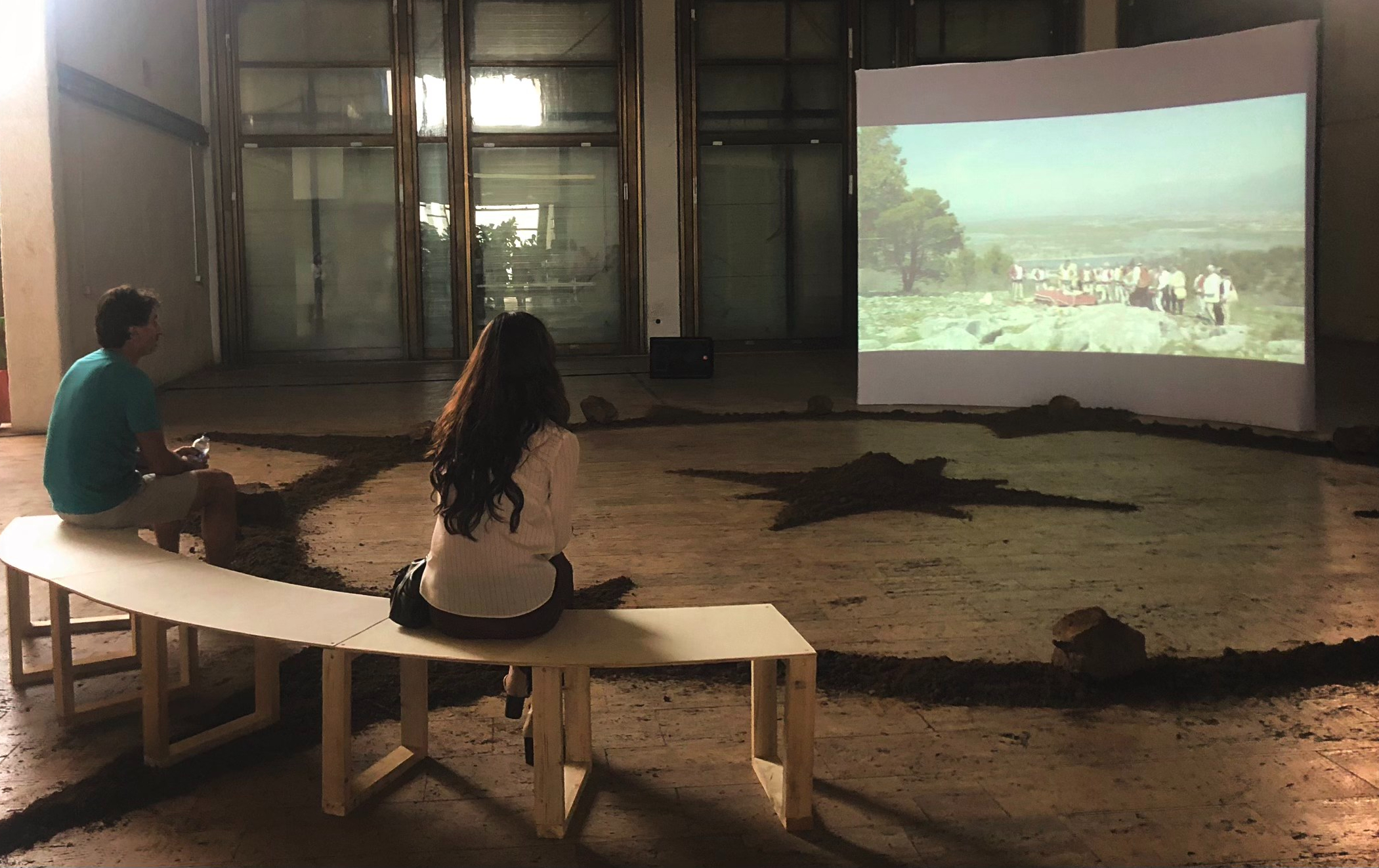

The Atelie Hall of the Palace of Youth and Sports was transformed into a site of collective mourning on Wednesday night as Zgjim Elshani unveiled his new installation ‘Gjama’, which is inspired by ancient Albanian grieving rituals.
Prishtina was introduced to Zgjim Elshani’s audiovisual installation Gjama at the Atelie Hall of the Palace of Youth and Sports on Wednesday, amid a funereal atmosphere.
Soil covered the hall floor, spread out into a solar pattern, while cries from performers of a collective mourning ritual emanated far beyond its four walls.
On a screen, a body covered in a fabric lay on the ground, surrounded by men whose shouts echoed around a meadow in the region of Shkodra in northern Albania. In the background, women wailed for the deceased.
The performers were reenacting an old pagan mourning ritual practiced by Albanians throughout the centuries, Gjama, from which the installation takes its name. The ritual, used only for dead men, has been practiced mainly in northern Albania and some parts of western Kosovo, particularly in the regions of Malesia e Madhe, Dukagjini, Gjakova, Iballa, Mirdita and Tropoja.
It is used to overcome pain, to express collective grief and to respect the deceased, and the project encourages its audience to “rethink collective grieving and what it means to publicly display emotions in a male-headed society.”
Elshani tells Prishtina Insight that he believes collective mourning can help alleviate pain and loss. “We can see this in other ceremonies that we have in cases of death,” he says. “It is seen when large numbers of people gather to share the pain.”

The artist says that the inspiration behind the installation was to document rites and customs that may otherwise be forgotten.
“This pagan ritual is very interesting. The very fact that collective pain is expressed through spirituality in this way demonstrates that this ritual must be documented,” he tells Prishtina Insight. “It is a sin to forget.”
Contemporary practitioners of the ritual are rare, and Elshani first had to research the history of Gjama before beginning the search for people who had personal experience of it, and were able to perform the reenactment.
“In Theth a person introduced me to a man in Shkodra who practices the ritual, and the people you see in the video all practice this ritual,” he says. “Here they did it for an installation, but they go to funerals and practice Gjama.”

Elshani, who lives in the Netherlands, says that he will look to exhibit his work abroad and will apply to a number of international festivals. He is also interested in recreating other ancient Albanian rituals for future installations.
Gjama will remain open for one more day, Thursday June 24, from 19:00 at the Atelie Hall at the Palace of Youth and Sports in Prishtina.
24 June 2021 - 11:00